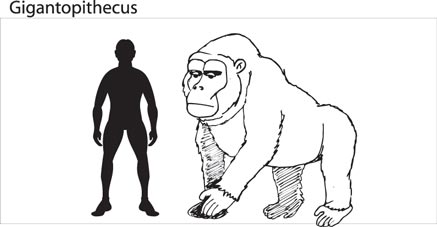Chinese Dinosaur Bones used as Medicine
Reports of earlier this week of local Chinese people using dinosaur fossils of medicine are difficult to believe in the West, but this practice of using fossils in traditional medicine is actually quite common. Indeed, there is quite a trade in various dragon bones and other such items within the Far East. Most of the fossils are ground up into fine powders and then these are added to herbs, animal remains, seeds and fruits to make up local remedies. These medicines are used to “cure” a number of ills from tummy upsets, headaches and even colds and flu. It may seem bizarre to us but as dragons are very important to the local mythology of the more remote parts of China. Dragons are supposed to have magical powers and it is these properties that persuade locals to take them in potions to cure what is ailing them.
Chinese Dinosaur Bones
Ironically, the ancient Chinese who first discovered dinosaur fossils were pretty accurate in their assessment of them belonging to dragons – giant, monstrous reptiles. Not a bad hypothesis, a theory that did not take hold in the West until the 19th century. Grinding up these fossils for use in medicine may also sound odd, I shudder to think what priceless discoveries have ended up ground into powder by a shaman. However, fossils are generally only found in sedimentary rocks like limestone. These alkaline rocks, once ground down into a fine powder and swallowed may actually assist in easing certain stomach complaints such as acidosis and indigestion. Although, I would never recommend anyone to try this – stick to the prescribed indigestion remedies.
Perhaps we could learn a trick or two from these ancient apothecaries.
It is not just dinosaur bones that have been lost to science due to the practices of Chinese medicine. The German palaeoanthropologist Ralph von Koenigswald was wandering around the back streets of Hong Kong in 1935 when he happened upon one of these pharmacies. Curious, he wandered in and he found on one of the many shelves, a very large molar (a tooth) labelled as a dragon’s tooth. He knew that this was a fossil and that it was unlikely to have come from any known reptile but what strange animal could possess such a huge molar? Doctor Koenigswald purchased the tooth and persuaded the proprietor to show him exactly where the tooth had come from.
The fossil tooth was traced back to a remote cave, in which, was found more teeth and some bones. Ralph von Koenigswald had discovered a new fossil primate species – the largest ape ever known. He named this new animal Gigantopithecus (Gigantic Ape), it is believed that the males weighed over 550 kgs and if they could stand their two feet they would have been over 3 metres tall.
A Scale Drawing of a Male Gigantopithecus
Picture credit: Everything Dinosaur
Gigantopithecus
Gigantopithecus is the largest known ape, a peaceful, herbivore it probably was mainly ground dwelling due to its size. They existed throughout South-east China and Vietnam, finally going extinct around 200,000 years ago.
For models and replicas of giant apes (whilst stocks last): Rebor Figures and Models.







Leave A Comment